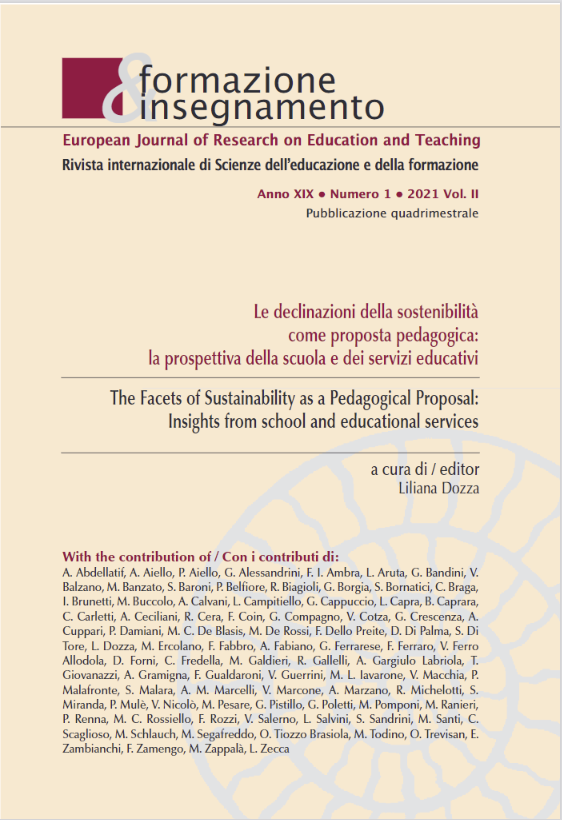Narrative thinking as a tool re-thinking oneself in the THIRD SPACE in an EAS
DOI:
https://doi.org/10.7346/-fei-XIX-01-21_45Abstract
The study proposed here highlights the students’ way of being and thinking in the third space (Gutierrez, 2008; Potter & McDougall, 2017) and the pedagogical practice in place as a reflection on one’s own didactic action Reflecting on the lived contextual situation favors situated and experiential learning in students (Kaneklin, Scaratti, 1998; Kafay and Resnick, 1996; Jonassen, 1995, 2000) linked to the current needs of cultural abstractions, acquisition of skills and analysis, ability to understand and navigate to investigate a content, and consequently a new production of literacy which is enriched when the meaning is negotiated and contingent. The methodological framework has its roots in a situated learning episode (Rivoltella, 2015) understood as a “teaching and learning activity which through a limited content, a reduced temporal development and a contextualized action is proposed as a form of effective teaching and opportunities for meaningful learning “. The expected results show the acquisition of holistic and reflective media learning, capable of generating meanings based on the search for new taxonomies and transdisciplinary content, on play and on collaboration. On the other hand, pedagogical didactic reflection has led teachers to assume a digital habitus and a mindset shaped on the basis of the digital remodeling of the contents to be learned.
Downloads
Published
How to Cite
Issue
Section
License
Copyright (c) 2021 Pensa MultiMedia

This work is licensed under a Creative Commons Attribution 4.0 International License.
Formazione & insegnamento is distributed under Attribution 4.0 International (CC BY 4.0).
For further details, please refer to our Repository & Archiving Policy, as well as our Copyright & Licensing Terms.





